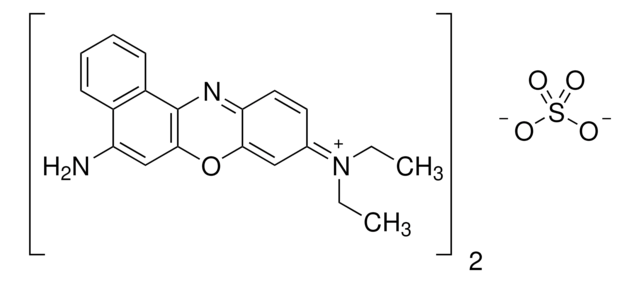243221
Beeswax
bleached
Sinónimos:
Cera alba
Iniciar sesiónpara Ver la Fijación de precios por contrato y de la organización
About This Item
Productos recomendados
¿Está buscando productos similares? Visita Guía de comparación de productos
Categorías relacionadas
General description
Beeswax is a natural wax that is formed from honeybee Apis mellifera. It is a lipid that contains hydrocarbons, esters and free acids, which can be used to lower the transference of water on films.
Application
Beeswax is used to produce edible films (sodium caseinate, soy protein isolate etc.). It can form a mixture with a variety of fatty acids and polyols to provide flexibile, elastic and stretchable films. It also decreases the water vapor permeability and enhances the mechanical properties of the film.
Storage Class
11 - Combustible Solids
wgk_germany
WGK 3
flash_point_f
509.0 °F
flash_point_c
265 °C
ppe
Eyeshields, Gloves, type N95 (US)
Elija entre una de las versiones más recientes:
¿Ya tiene este producto?
Encuentre la documentación para los productos que ha comprado recientemente en la Biblioteca de documentos.
Los clientes también vieron
Tensile properties and water vapor permeability of sodium caseinate films containing oleic acid-beeswax mixtures
Fabra MJ, et al.
Journal of Food Engineering, 85(3), 393-400 (2008)
Effect of beeswax modification on the lipid matrix and solid lipid nanoparticle crystallinity
Attama AA and Muller-Goym CC
Colloids and Surfaces. A, Physicochemical and Engineering Aspects, 315(1-3), 189-195 (2008)
Daniel Bauer et al.
Die Naturwissenschaften, 100(1), 45-49 (2012-11-15)
The nests of European honeybees (Apis mellifera) are organised into wax combs that contain many cells with a hexagonal structure. Many previous studies on comb-building behaviour have been made in order to understand how bees produce this geometrical structure; however
R J Stacey
Analytical and bioanalytical chemistry, 401(6), 1749-1759 (2011-06-18)
Residues from medicine containers in the collections of the British Museum have been investigated as part of a wider programme of scientific work on Roman surgical instruments. The cylindrical bronze containers are often described as instrument cases, but some contain
Federico Bernardini et al.
PloS one, 7(9), e44904-e44904 (2012-10-03)
Evidence of prehistoric dentistry has been limited to a few cases, the most ancient dating back to the Neolithic. Here we report a 6500-year-old human mandible from Slovenia whose left canine crown bears the traces of a filling with beeswax.
Nuestro equipo de científicos tiene experiencia en todas las áreas de investigación: Ciencias de la vida, Ciencia de los materiales, Síntesis química, Cromatografía, Analítica y muchas otras.
Póngase en contacto con el Servicio técnico









